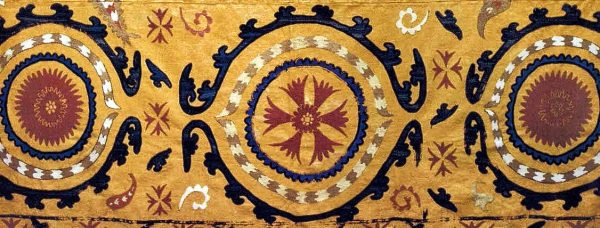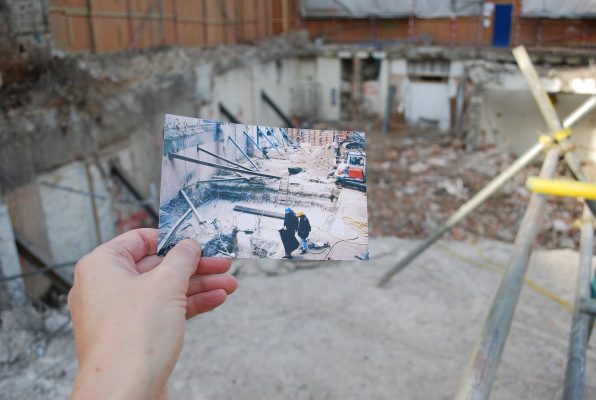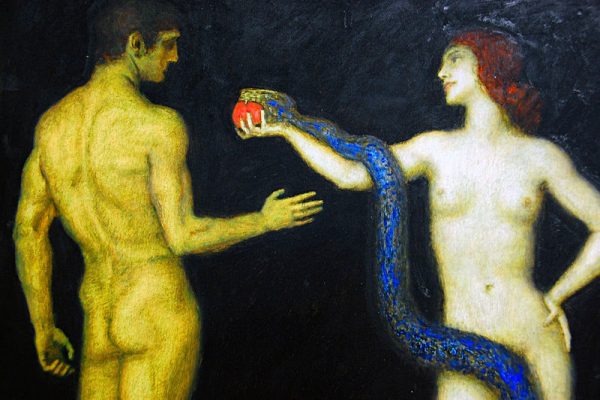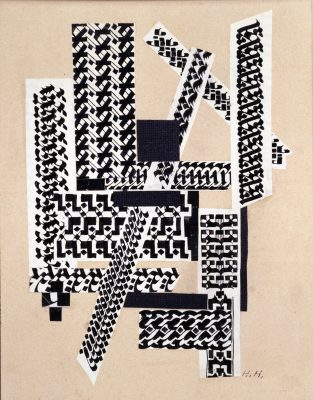In States of the Body Produced by Love, Nisha Ramayya explores the Hindu goddess Parvati in her ten forms, the Mahāvidyās, each goddess coursing through the book’s river in her own wisdom. Invoking these goddesses, the poetry draws us into their stories, ruptures temporal stasis, and aims to transcribe and bridge the distance between the human and the divine. Sanskrit is fluidly interwoven alongside the English: the poetic glossing of Sanskrit is generous, and opens a space for interaction and immersion in both languages. Ramayya writes, in the introduction to the collection:
‘As mantras, the Mahāvidyās embody language – they are words, actions, meanings, and the supreme stage of language that transcends words, actions, meanings. They speak me into being; I cannot precede myself to translate their stories into my own words’
The goddess is configured as language. Each Mahāvidyā embodies a type of intention, and Ramayya’s poetry seeks to carry these intentions on the page. These states of language and intention slowly unfurl throughout the book, from death to vibrating life. The poetic incantations bring these various states to life with pulsating vividness, brimming with descriptions exploring direction, scent, gender, politics, knowledge, and body parts. As well as creating this type of incantatory, fluid poetry, the collection acts as a prayer and an intensely personal account of engagement with cultural history. These ‘states of the body produced by love’ allow the poetry to traverse the Mahāvidyās and to access the vessels of knowledge within them.
The collection is dense with cultural, religious and historical references, and these are layered in both English and Sanskrit. In this way, the text also becomes a repository for a kind of ‘language-sediment’. By choosing to weave both languages together, Ramayya exposes English as a colonial tool. She by turns explains key terms and refuses conventional translation, and in doing so creates her own kind of language. For me, as a reader, this is a source of comfort. As Ramayya writes, the poetry ‘offer[s] tongues’, both in the literal metaphor within the poem but also in how it creates, throughout the collection, this poetic language. I understand some of the Sanskrit words, but not all of them – yet I also respect the lack of comprehension, and I allow myself to be guided by whatever the poetry chooses to reveal. I observe as the poetry gains lucidity, and dims again to elusiveness:
‘I, ritual, am going to die; I will be directionless’
Although carefully structured, footnoted, cross-referenced, historically dated, and replete with a stylised dictionary of terms, the poetry also asks us to be comfortable with being directionless. It asks us to be accepting of poetic submersion.
This idea of a willful directionless, a lack of fixity, extends into the collection’s considerations of selfhood, time and memory. States of the Body Produced by Love asserts selfhood and time as aspects that are fixed sites, and simultaneously fluid. This is brought to the fore in Ramayya’s focus on Bhairavī, the fifth Mahāvidyā, ‘she who sits quietly, reading and dreaming of devastation’. This dreaming of devastation is closely connected to what Ramayya calls ‘the demystification of memory’ – and both are linked to the concept of immolation, or self-immolation. Ramayya links the idea of self-immolation to the experience of being an immigrant: her poetry contemplates the immolation of a fixed self, and the subsequent creation of multiple selves, that the immigrant experience can enact. There is an attempt, in the text, to create a specific erasure, one that is both personal and ritualistic:
‘Drink water before saying her names, before praying. Rinse your mouth after singing, after eating. Spit after speaking, after praying… Why do you hold me after you’re gone?’
But self-immolation is not easy. After such incantatory language courses through your throat, the ‘frustrating unearthliness’ of the goddess’ spirit stays with you, ultimately refusing immolation. This is the strength of the goddesses: their names cannot sit in your mouth for too long, the prayers are too volatile to be held in your fragile limbs, your hands.
Another crucial aspect of States of the Body is the way it tries to reconcile the wisdom of the Mahāvidyās in their feminised, fascinatingly complex forms, and the treatment of marginalised communities in India today. Specifically, Ramayya considers and pays tribute to the horrific 2012 rape and murder of Nirbhaya, who
‘…died in Delhi following a sexual assault… desire is inseparable from loss, inseparable from shame… I want to find words to move close; I want to risk making contact… approach the sexual violence and structural inequalities experienced by women and feminised people in India, especially Muslims, Dalits, and Indigenous, trans, intersex and non-binary people’
But Ramayya acknowledges how difficult it is to reconcile the reality of the worship, the paths that the goddesses guide us on, and the reality of what marginalised communities in the subcontinent face today, subjected, as they are, to continual dissonance and trauma. She writes,
‘I sneak [the Goddess] out of my critique, trying to keep her safe while I seek out her feminist potential, trying to make her matter without neglecting material realities’.
Ramayya negotiates this reality by simultaneously reflecting on the horrors faced by marginalised peoples, and tying these concerns to the suffering and power of the ancient goddesses. The poetry draws strength from this power; it repeatedly invokes the goddesses, praying to them, speaking them into the spaces of everyday life, of daily tragedies. Every avatar of the goddess is a separate tributary of reality: the material, the metaphysical, the mythological. These come to a confluence where every reality merges; the सम् रदशा, the smaradaśā, the ten states, hold space for every fissure. The ten states merge the material and mythological, making space, also, for divine solace. In ‘Joy of the Eyes’, she writes,
‘The first time that you see me, you will see me, without implication of time’
Alongside referencing historical and current events, the collection’s intricate exploration of Hindu mythology ruptures this ‘implication of time’. The book leaves me with chills: so much information, so many names and ślokams reverberating through my scalp. The poetic voice throughout this text is simultaneously vulnerable and devotional, and powerful in both aspects. I read States of the Body Produced by Love over and over again, on trains, in my garden at home, in bed, on the tube, in between countries, in between times. For me, it is a constantly elusive, shifting text. I come from a Hindu background, but am less familiar with many of the concepts that Ramayya writes about. To read it is also to delve back into the tributaries of my own memory: images of visiting temples, the rhythms of ślokams ringing in my throat, days sat around ceremonial fires – coughing from incense and smoke, dreams in which the goddess appears – always different. Thinking through these sites of memory, I consider the stark contrast to current realities, in which intolerance for plurality is constantly growing. Ramayya’s book celebrates the beauty of Hindu accumulation: it gestures to the fact that there is already space created for all of these avatars, and all of these goddesses.




